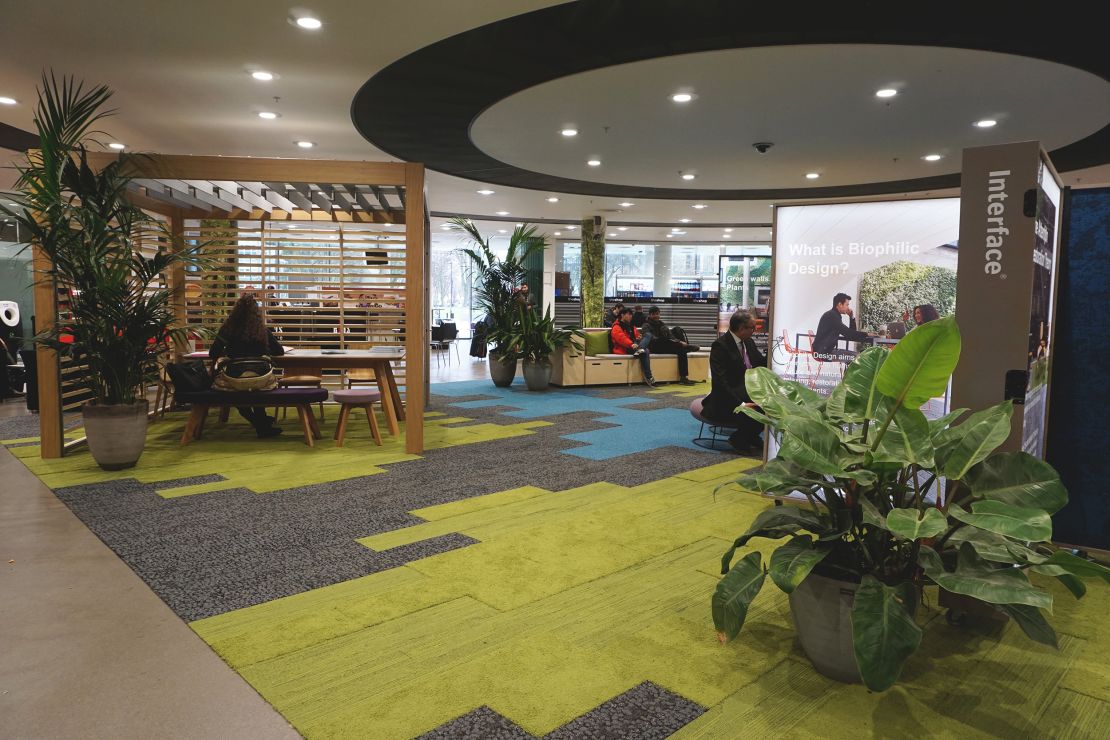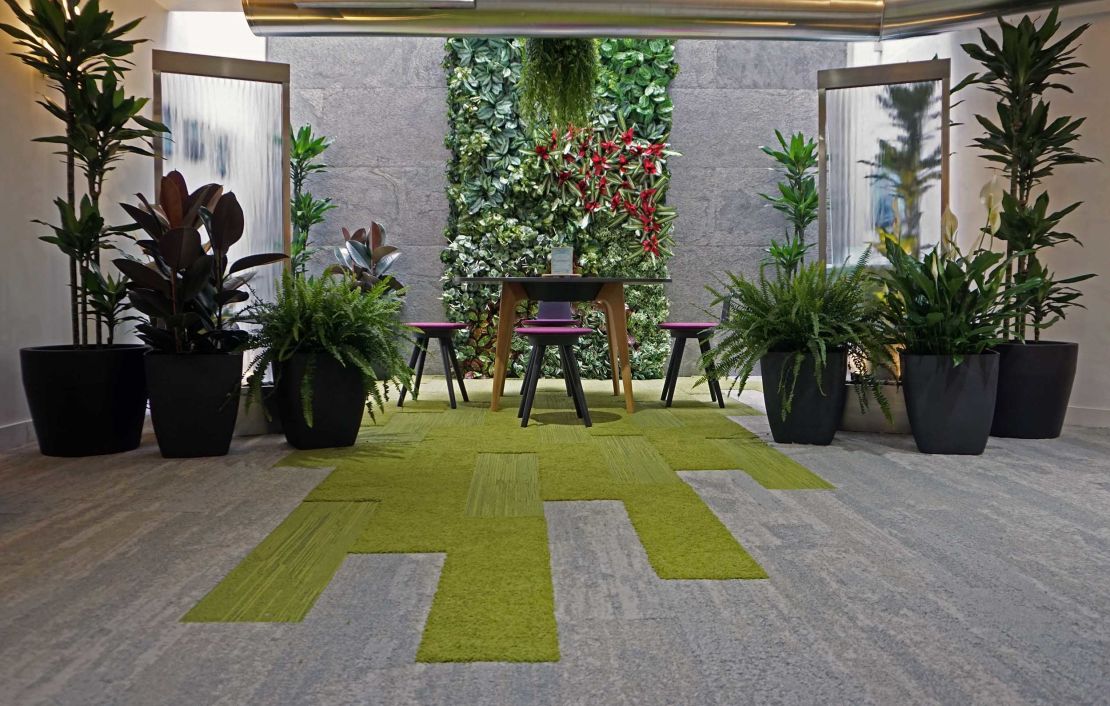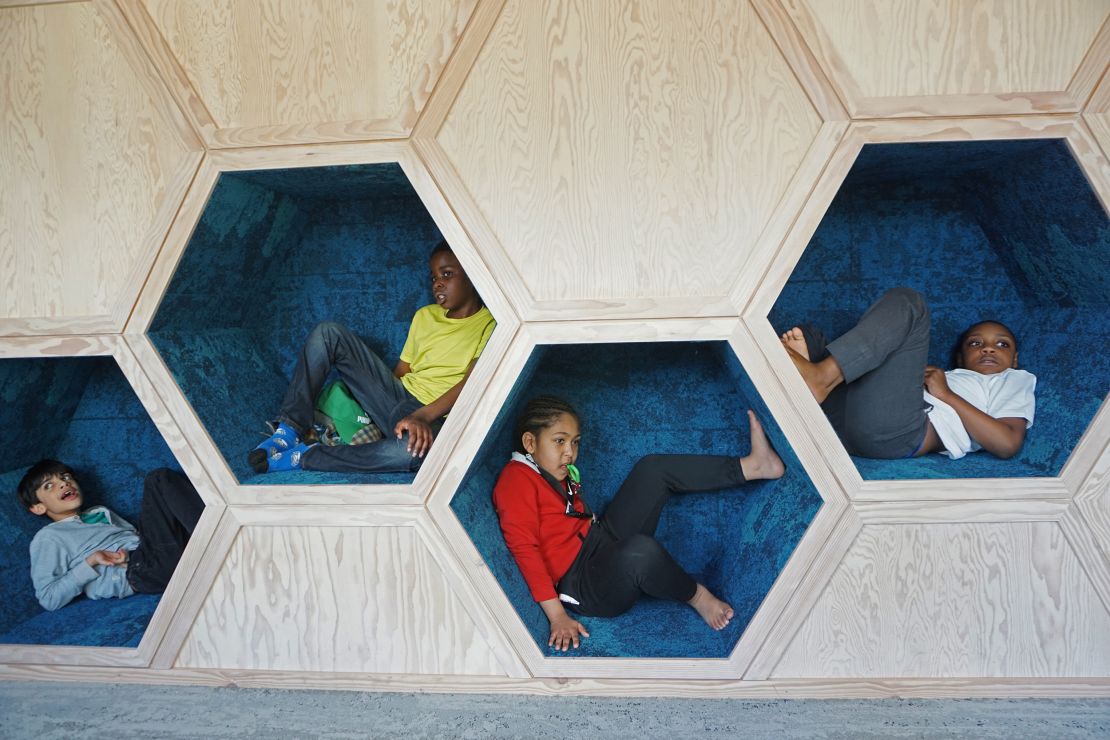Trees, natural wood surfaces and water features — could these be investments that give your business a competitive advantage?
Biophilia is our instinctive human love of nature, and it is behind a growing design movement in workplaces that is making employees healthier and more productive.
At a time when the World Health Organization (WHO) has dubbed stress as the “health epidemic of the 21st Century,” could surrounding office workers with nature really offer a meaningful path to change?

One advocate for biophilic design is Oliver Heath. The Brit has worked on biophilic design for seven years and says it “most certainly” helps companies
“I have been teaching architects all over the EU about the business and the ROI (return on investment) of biophilic design. Research suggests that it is an essential component of supporting healthy people,” he said.
His claims are well-supported. A 2015 report commissioned by the modular flooring company Interface and led by organizational psychologist Professor Sir Cary Cooper, titled “The Global Impact of Biophilic Design in the Workplace” details international research into the benefits of nature in our workspaces.
One of the studies detailed in the report found that employees who worked in environments with biophilic design elements were 15% more productive in comparison to groups with no greenery or natural environments. Nearly nine in ten workers in offices that incorporate biophilic design also reported improved well-being following the change.

This is especially significant given that 47% of workers in the global study reported having no natural light in their office, while 58% have no plants.
Biophilic design can also help attract and retain employees, Heath says.
“More and more employees are considering the quality of environment they work in. They will be spending hours and hours of their life in there. Would you want to leave a lovely, light, natural office to work in an old, dark space?”
Heath says biophilic design remains in a “transitional” phase and the opportunity for early adopters is great — however, that is changing.
“When I started there was very little awareness but now it is spreading,” he said. “What we are seeing is a real rise in awareness and uptake of health in the built environment. The design has a strong role to play.”
So what should business leaders be doing?
“Firstly it’s much, much more than just adding plants,” Heath explained.

“But even for no money, you can enforce the importance of getting out, of not too much artificial light … you can have pets visit work, you can utilize natural views and have people eating together.”
All of these help to evoke a sense of nature (in the case of lunches it is about seeing others eating) and this brings the benefits of reducing stress and aiding psychological restoration, according to Heath.
Other measures include using natural materials, filtering in sunlight, installing “green” walls, water features or plant features.
Heath’s design business is seeing increasing demand in the area and he expects this to continue.
“When you consider that employee salaries and benefits account for 90% of costs for many businesses you can see the importance.”







